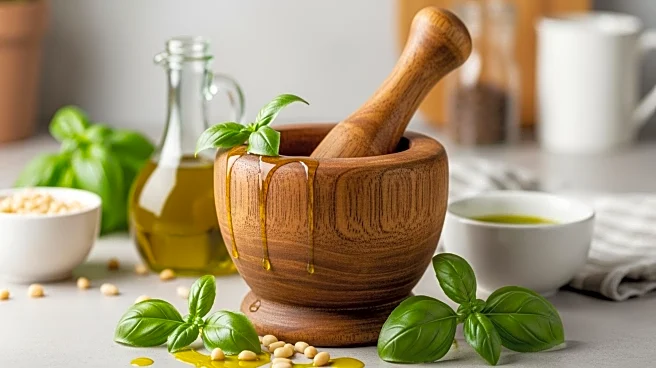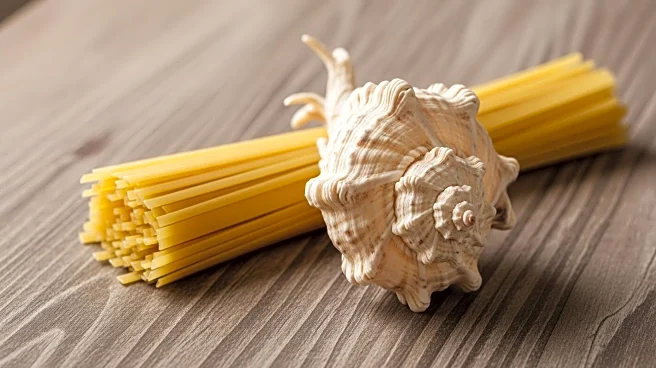Pesto, also known as pesto genovese, is an Italian paste made with basil leaves, extra virgin olive oil, Parmesan, pecorino sardo, pine nuts, and garlic. It originated in the Ligurian city of Genoa and is used
to dress pasta. The name pesto is the past participle of the Genoese verb pestâ, meaning 'to pound', 'to crush': the ingredients are 'crushed' or ground in a marble mortar through a circular motion of a wooden pestle. The same Latin root is the basis for pestle. There are other foods called pesto, but pesto by itself usually means pesto alla genovese.
What the Word Meant
The name pesto is derived from the Genoese verb pestâ, which means 'to pound' or 'to crush'. This reflects the traditional method of preparation, where ingredients are crushed in a marble mortar with a wooden pestle. The term pesto has been used for various sauces, but it typically refers to the classic pesto alla genovese.
Before It Was “Pesto”
Pesto is thought to have had two predecessors in ancient times, going back as far as the Roman age. The ancient Romans used to eat a similar paste called moretum, which was made by crushing garlic, salt, cheese, herbs, olive oil, and vinegar together. During the Middle Ages, a popular sauce in Genoan cuisine was agliata, a mash of garlic and walnuts.
Where It Coalesced
The introduction of basil, the main ingredient of modern pesto, occurred in more recent times and is first documented only from the 1850s. Emanuele Rossi published La Vera Cucineria Genovese in 1852, and gastronomist Giovanni Battista Ratto published La Cuciniera Genovese in 1863. Basil took the firmest root in the regions of Liguria, Italy, and Provence, France.
Ingredients That Changed Everything
The original pesto alla genovese is made with Genovese basil, coarse salt, garlic, Ligurian extra virgin olive oil, European pine nuts, and a grated cheese such as Parmesan or Grana Padano and pecorino sardo or pecorino romano. Outside Italy, the name pesto has been used for all sorts of cold sauces or dips, mostly without any of the original ingredients, incorporating alternatives like coriander, dill, kale, mint, parsley, rocket, spinach, or wild garlic.















